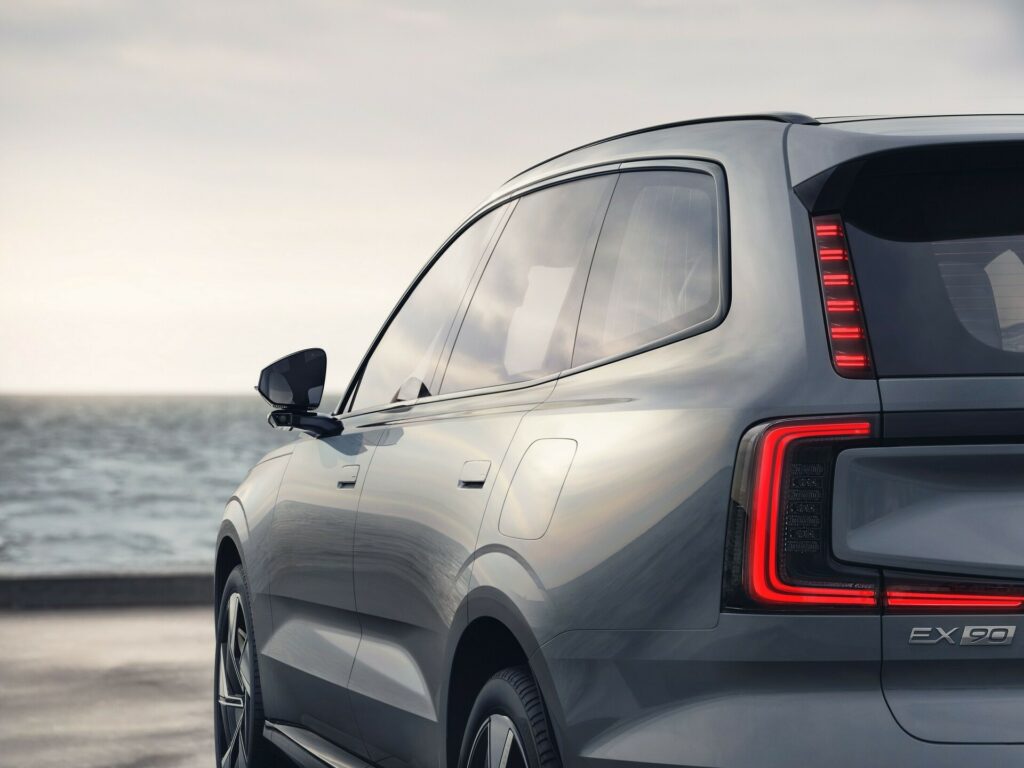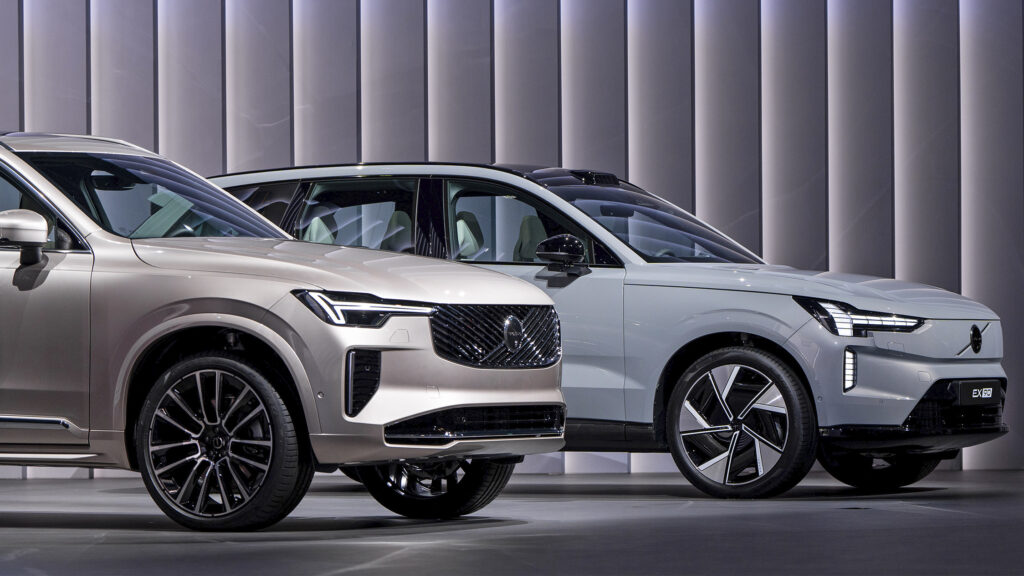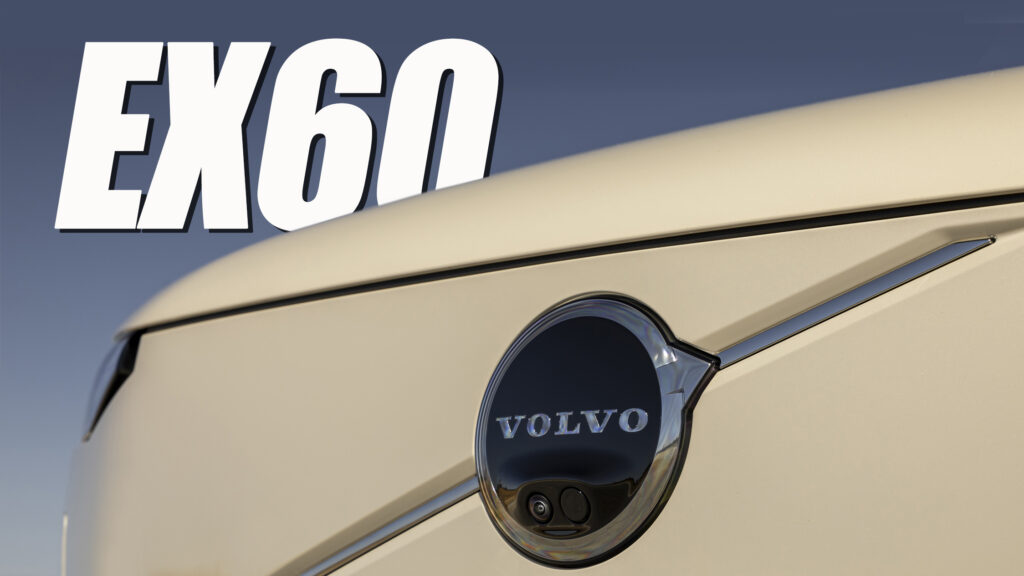- Volvo announced a new SPA3 architecture that will underpin the upcoming EX60.
- The SPA3 platform offers significantly greater scalability than its SPA2 predecessor.
- The Volvo EX60 will act as an electric alternative to the best-selling XC60 SUV.
Volvo might have abandoned its earlier goal of becoming an EV-only brand by 2030, but this doesn’t affect its plans for future zero-emission models. A very important debut is expected in 2026, with the Volvo EX60, riding on the new SPA3 architecture and serving as a fully electric alternative to the ICE-powered XC60.
The EX60 will be Volvo’s first model built on the new SPA3 scalable architecture, designed to develop future models faster and more cost-effectively. This platform is a heavily upgraded version of the SPA2, which already underpins the larger EX90 SUV and will also support the upcoming ES90 sedan. SPA3 brings advancements like “enhanced core computing capability” and a “far more scalable” design compared to its SPA2 predecessor.
More: Volvo ES90 Teased As New Electric Flagship Sedan
Starting with the EX90, all future EVs by the Swedish automaker will use the same “Volvo Cars Superset tech stack”. This is described as a “fundamental core of systems, modules, software and hardware”, which can be configured in many ways, and will continue to improve and grow. Each model will use a “selection, or a subset, of building blocks from the Superset tech stack” depending on its segment and market positioning.
According to Volvo, the SPA3 is theoretically compatible with models of all different sizes, from smaller than the EX30 to larger than the EX90. The “modularity and upgradeability” of the platform translates to lower investment costs and significantly reduced production costs. This will allow the Swedish automaker to be more flexible and adjust quicker to fluctuating market conditions.

Volvo EX90
Anders Bell, Chief Engineering & Technology Officer at Volvo Cars, told Autocar that the SPA3 will represent a big step forward from an engineering point of view while being an “evolution” in terms of software and electronics compared to its predecessor. Bell added that the new platform is “designed from the beginning to be much more scalable, in size and price point and across regions, but also scalable in volume”.
An EV Companion To Volvo’s Best-Seller
Björn Annwall, Volvo’s deputy CEO, said that the upcoming EX60 will bring a “huge boost”, marking a “step change” in their “electrification journey”. Annwall described the best-selling XC60 as “the heart of the Volvo portfolio” and a “fantastic car”, although a lot of people are waiting for an EV option that will arrive soon.
The EX60 is expected to have a similar footprint to the XC60, likely sharing styling cues with the smaller EX30 and the larger EX90. Rivals will include the BMW “Neue Klasse” iX3 and the electric version of the Mercedes-Benz GLC, set to debut in 2025 and in 2026 respectively.
Volvo’s fully electric midsize SUV was originally announced in 2021 as a successor to the XC60. However, the new plan wants the existing ICE-powered Volvos to be updated, so they can remain on sale alongside their newer electric counterparts amidst the global EV slowdown.
Judging from the fact that the current XC60 has been around largely unchanged since 2017, chances are that Volvo will introduce a facelifted version in a few years. The same strategy has been applied to the recently facelifted Volvo XC90 that joined the fully electric EX90 flagship.





